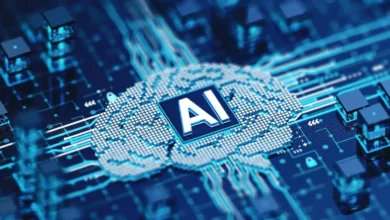Car Safety: Advanced Technology To Protect Your Vehicle

The revolution of the automobile changed the concept of travel and became one of the backbones of modern life, it completely changed the way we think about navigating our world. The convenience and freedom brought about by cars also carry one surefire warning: traffic accidents cause the deaths of millions around the world each year. And in direct reaction, we can find continuous development in automotive safety technology that opens new avenues toward a much safer future.
The much-advanced inventions further include the autowatch ghost Immobilisers, a security technology to prevent automobile theft. The autowatch ghost immobiliser makes a car practically unable to drive without the right code and adds a level of safety from criminal intent. And with more and more dependency on autos, such technologies are becoming extremely pivotal in preventing the chances of road disasters and making the roadways safer. In this article, we’ll explore cutting-edge technology to protect your vehicle.
Advanced Driver Assistance Systems (ADAS)
ADAS refers to the technologies developed for driving safety, aiming to reduce the risk of accidents. Some important features that come under the category include adaptive cruise control, lane-keeping assist, and automatic emergency braking. Adaptive cruise control maintains the speed of a vehicle at optimal levels with sufficient inter-vehicle distance, while lane-keeping assist maintains the position of the vehicle itself at the center of the lane. Automatic emergency braking detects an impending collision and can slam on the brakes for the driver to avoid or soften the impact of the collision. These features combined will create a less stressful atmosphere when driving and are much safer under poor conditions or traffic congestion.
Vehicle-to-Everything Communication
V2X stands for Vehicle-to-Everything Communication, an innovative technology where vehicles talk to each other and with infrastructures along the road like traffic lights and in-road sensors. V2X enables vehicles to create a better understanding through the sharing of real-time information concerning their surroundings for informing the drivers about impending hazards, enhancing traffic flow, and reducing collision possibilities. For instance, V2X can alert the driver when a traffic light has turned green or is going to provide a stoppage in traffic flow. The concept here is attached to the transportation idea on a platform level for better safety and efficiency on the roads.
Surround-View Camera Systems
Surround-view camera systems mount several cameras on the car to provide a complete view of one’s surroundings to the driver. The system stitches these feeds together into a virtual, bird’s-eye view that is displayed on the infotainment screen. It proves to be quite helpful when parking or pushing through tight spaces because it allows the driver to notice obstacles and pedestrians that may not be easily seen through the rearview or side mirrors. Surround-view systems greatly reduce blind spots while improving overall situational awareness and making parking and performing low-speed maneuvers a great deal much safer and more precise.
Blind Spot Monitoring and Rear Cross Traffic Alert
The significant technologies to avoid accidents while changing lanes and during reverse driving include blind spot monitoring and rear cross-traffic alert. Blind spot monitoring uses sensors that monitor other vehicles when they enter into the driver’s blind spots and provide a visual or audible warning when it is not safe to change lanes. A rear cross-traffic alert detects traffic coming from the side while reversing and warns the driver about the possibility of a collision. It is of great use during heavy flow conditions and in car parks where the visibility is not clear enough.
Driver Attention Monitoring
Driver attention monitoring systems deploy cameras and sensors to monitor driver behavior to look at signs of drowsiness or distraction. It alerts the driver or informs him, with advice on taking a rest if it feels that either the driver is not paying attention to the road or is feeling fatigued. This technology addresses one of the leading causes of accidents-driver inattention. In that respect, the driver’s attention monitoring cuts down on the probability of accidents triggered by driver fatigue or distraction.
Traction and Stability Control Systems
The general function of traction control systems and stability control is to increase vehicle stability and traction on rain, snow, or ice. Traction control reduces wheel spin by an adjustment to either the engine power or the application of the brakes to individual wheels, while stability control acts to maintain vehicle control during instances of skidding or oversteering. These, among others, enable the driver to keep the vehicle in control and stable with minimal chance of skidding, hydroplaning, and loss of vehicle control. The Traction Control System avails the extra amount of safety while driving in less-than-perfect conditions by only intervening when or if it is called for.
Conclusion
New concepts of vehicle safety currently include modern automotive safety technologies, including Adaptive Cruise Control and Blind Spot Monitoring, including the use of the Autowatch Ghost Immobiliser. Such innovations are important in reducing accidents and enhancing protection, reflecting a commitment to making our roads safer and mitigating traffic-related risks.
Visit techuknews for more informative news!



